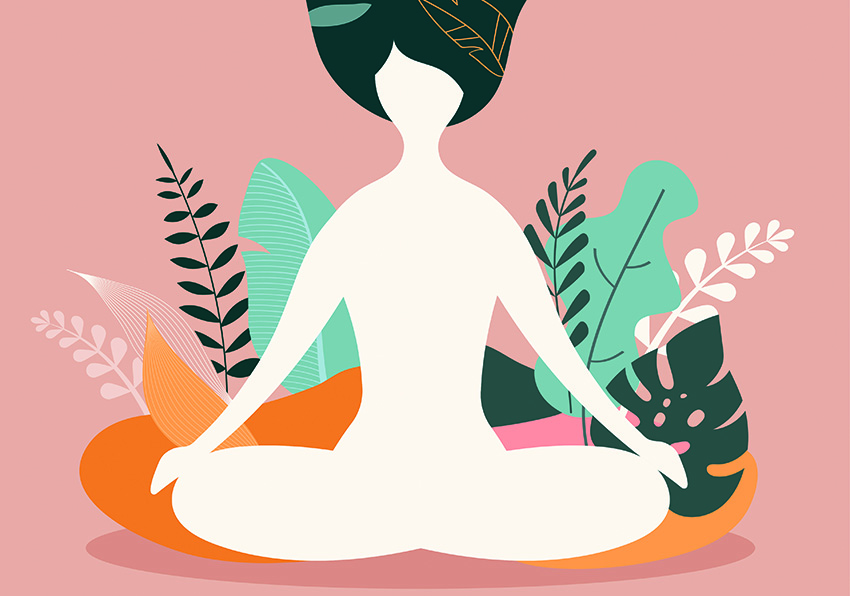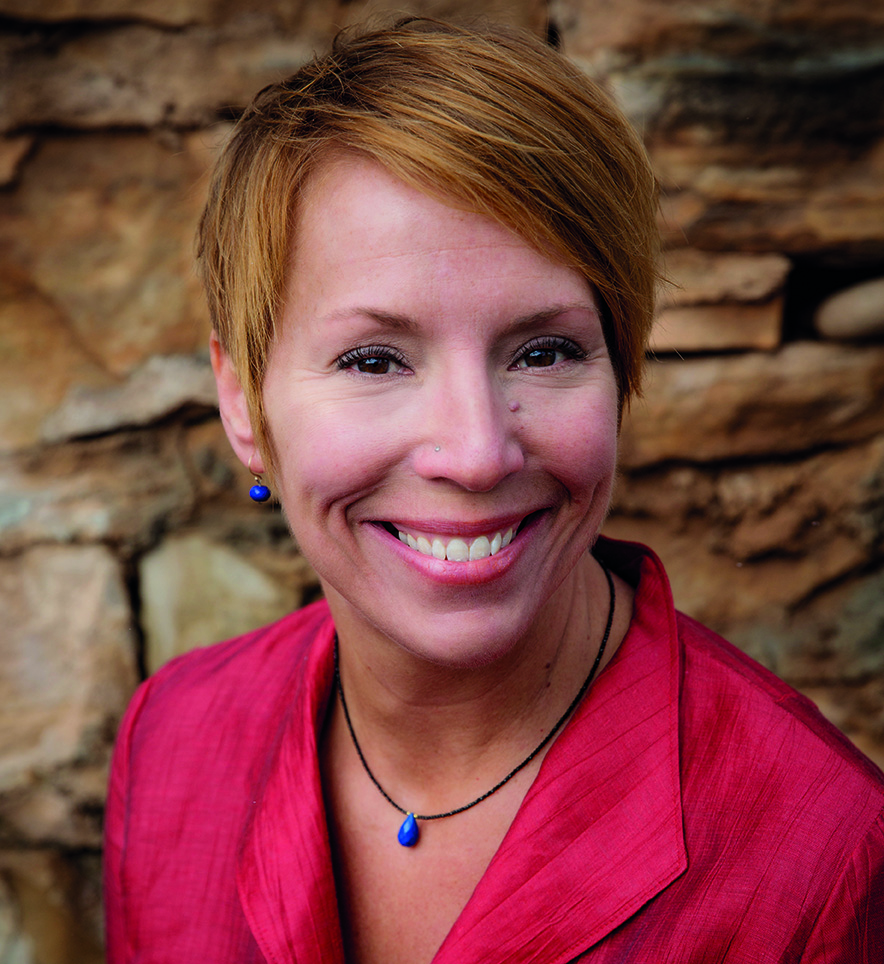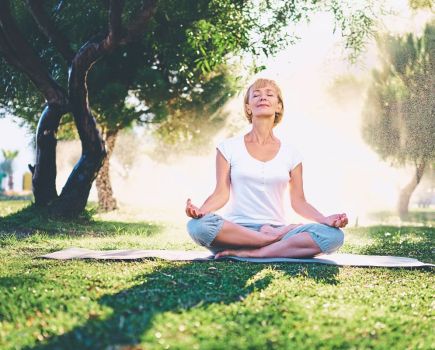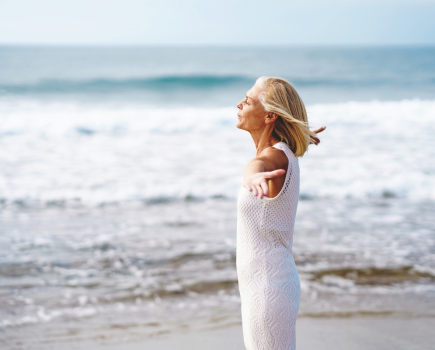This World Cancer Day (Feb 4, 2020) naturopathic oncologist Dr Nasha Winters talks to Top Santé’s editor Katy Sunnassee about cancer: what it is, why emotions play a huge part in its formation, and the holistic methods that worked for her.
I am 28 years out, as of last October, from a stage four ovarian cancer diagnosis. It was unfortunately missed, over and over, until it was frankly too late and had completely ravished my body. So my journey has been one of attending the “Save Your Ass university”!
It made me so passionate about really understanding why was I dealt that deck of cards? And what I’ve learned over the past 30 years is that we all have cancer, all of us! It’s a natural part of who we are. It only becomes a problem when it goes on the move, stops listening to natural cell death signals and starts to grow, grow, grow.
We’re almost at a 50 per cent cancer rate. Late in 2019, the number one cause of death in affluent countries was cancer, so in the UK most of the EU and the US, cancer has for the first time in human history overtaken cardiovascular disease as the top cause of death.
Cancer is a biological, evolutionary process that is in all of us. It’s only when we damage our mitochondria enough, so they can’t do their job of making energy as well as dying off when they are meant to, that the problem starts.
A cell becomes cancerous when it loses its ability to die, called apoptosis, which means it’s broken. Basically, your body is no longer able to take away its trash. The trash can build up and makes those cells way less effective and efficient. Mitochondria get suffocated and die off, which then creates a barren energy production. The body then starts to utilise things such as sugar to fuel the cancer rather than the rest of the body. So, we have to put the body back on its right course.
What we need to be asking is what made those cells go rogue? That’s what I do with people; I help them dig deeper, to test, assess, address, and don’t guess – that’s my mantra.
I help men and women, with all cancer types, of all ages, of all backgrounds, all over the world, find out why the tumour arose in their body, then help them figure out how to stabilise it. And, if we get lucky enough, it will go way, but that actually isn’t the be all and end all: the goal is to prevent it from moving.
People don’t die of primary tumour: they die of metastatic disease. So even if you find a lump or a bump somewhere in your body, that may just be a warning sign. Instead of trying to go after it and “over-harvest” it, if you will, which can lead to more problems, we might start first by asking: why did it arise? What soil did it grow from? In other words, in what state was our body to begin with?
And what can we do to amend the soil and keep it stable? It’s when cancer starts to move and starts to metastasise and impact your resources and nutritional needs, and cause blockages in certain organs or tissues, that it becomes dangerous. And when it gets to that point, in Western-standard oncology, frankly we don’t do very well at treating it.
Partly that’s because we don’t understand cancer. It creates such fear and overwhelm that everyone seems to lose their minds and ability to stay embodied so instead of calmly asking why it came about, they go into a get-it-out-of-my-body-now mode and create a battle mentality.
I had horrific nutrition and was extremely malnourished growing up. We were very poverty stricken, eating the standard American diet of fast-food junk. There was no actual food in my diet – it was like “Franken-food”.
There was that plus extreme trauma, too, which was probably what let the cancer take root at that time. Fast-forward another decade or so, there became even more issues surrounding my immune system, more issues around stress, including medical school, which was incredibly stressful, and the cancer tried to get on the move again.
One of the main drivers of breast cancer, across all ages, is low vitamin D3. Vitamin D3 should really be called a hormone, too. Vitamin D3 wakes up your immune response and also balances out blood sugar and oestrogen.
Secondly, high sugar levels are a problem as they cause insulin to spike. Insulin is a growth factor. When it’s “on”, it tells things to “grow baby grow!” and when insulin is high, so are oestrogen and cortisol – all three of these are drivers of cell proliferation. So you want to be mindful of stress levels to keep cortisol down and you don’t want to eat a high carbohydrate diet. But I know it’s hard!
Sugar hits that dopamine spot so you have to work hard to overcome that craving; it’s very much about mindfulness, wilfulness, education, empowerment and becoming less dependent on sugar as an energy source.
There are 27 clinical trials on the ketogenic diet for cancer or to support cancer therapies. This is just in the Unites States, not counting what’s going on globally. I eat a ketogenic diet but I don’t always recommend keto diet to my patients, not in every circumstance.
What I tell people is that there are many ways to be in ketosis [burning fat for fuel, rather than carbs]. One of the easiest ways is to simply fast for 13 hours a day, which means finish dinner at 6pm and then don’t eat until 7am.
There’s a big cancer institution in the US that did a study on 44,000 women who’d had breast cancer, who simply fasted 13 hours a day or longer and had a 70 per cent reduction in recurrence. They didn’t even look at what they were eating, just the times at which they ate.
But I’d say 80-90 per cent of the population can’t do it as we’re grazing every two hours or so. We snack at bed; we wake in the middle of the night needing another snack; we’re bursting out of bed putting something in our mouths right away.
Having to eat all the time is a sign of metabolic instability, which is making you susceptible to all chronic illnesses of today, including cancer.
So, I tell people to start off with maybe 10 hours fasting, then work towards 13 hours every day.
Once people master 13-hour fasting, I push them to do a 16-18-hour fast twice a week. On top of that, if they’re dealing with cancer, I have them do a 3-5-day fast once a month. It readjusts the immune system and will induce extreme autophagy [meaning killing off old cells] and rewire all of the metabolic patterns. Doing this means you get the benefits of the ketogenic diet but without having to eat a load of fat!
(Find out more about the benefits of intermittent fasting, including reversing type 2 diabetes and obesity, in the March issue of Top Santé).
For patients undergoing radiation therapy I recommend using exogenous ketones [a ketones supplement]. The reason is these quickly get you into ketosis, and you want to be in ketosis if you’re having radiation, as radiation therapy won’t work if insulin and glucose levels are high.
Most people don’t know this, so they’re having a cookie or other sugary thing right before they have the treatment! And the even crazier part is, cancer cells become desensitised to radiation if your sugars are elevated!
So, if I have patients who don’t have the time to get into eating a low-carb diet to get into ketosis naturally, I suggest they take exogenous ketones 20-30 minutes prior to a radiation session to enhance the kill effect, all while protecting the healthier cells.
What’s more, if you put radiation into a body with high glucose and insulin levels, first of all those cancer cells won’t respond very well, but you create more mutated and responsive cells that are more aggressive, and which can come back and bite you in the butt!
Even when people have finished radiation therapy, for the next 6-12 months the therapy is still doing something, so I really encourage people to still eat a low-carb diet, with fewer than 50g carbs per day. I also don’t advise eating a lot of meat if you have cancer.
There are studies looking at mistletoe and cancer. They show that all solid tumour types have an incredible response to the extract of this plant, when given by injection. They’ve been using mistletoe for hundreds of years in Germany and Switzerland.
Vitamin C has also been shown to have huge effects. IV vitamin C therapies have been shown to be very efficacious in ovarian, glioblastoma and pancreatic cancers, all of which are considered death sentence cancers.
I’ve probably personally overseen hundreds or thousands of IV vitamin Cs and also studied at the first place where IV vitamin C was done for cancer in the United States, at the Riordan Center in Wichita, Kansas.
There are multiple trials going on, again in the United States, at Indiana University and Cayman University for example. The problem is, most information takes 17 years on average to go from the bench to the bedside. The best place to go to online to find out about these trials is clinicaltrials.gov and type in “IV vitamin C and cancer”, and you’ll get piles of studies and current and past research projects. The information is out there it’s just not fully “out there”.
Air travels is a big stress to the body because of the EMF exposure. Even a seven-hour flight is the equivalent of a single chest x-ray, which is a known carcinogen. It’s hard to avoid air travel completely – I speak at cancer lectures around the world and notched up 300,000 airline miles in the last year – so we have to look at ways to transform it protect ourselves.
You can’t really block EMFs completely but you can sort of deflect them and change their frequency a bit so it’s a little less harmful to the body. I’ve got EMF deflectors around my phone, and my computer is in something called a Safe Sleeve, which helps deflect a bit of it. When I fly, I carry a shungite crystal to help deflect some of the radiation.
I also fast when I fly; I only drink water. I also take these little hydrogen pills in a glass of water – you can’t put them in plastic or metal – and they bubble up to help stimulate mitochondrial function, helping boost the ATP production in your cells.
So between that and fasting, it helps me get through those long flights. I always take extra vitamin C and glutathione, which are both protective against radiation.
When it came to my own cancer, I did lots of IV vitamins. I never had oxygen therapy because I hadn’t done radiation and didn’t feel it would be hugely helpful. I didn’t undergo surgery but I did have biopsies.
I had the fluid drained from my abdomen multiple times. But today, I’ve not done anything except for monitoring via blood tests. They are way less invasive [than other monitoring methods] and you get a lot of information back so you can monitor yourself in real time. For me that is enough.
I can’t do MRI scans anymore because of the gadolinium poisoning from the dye. It really destroyed my kidney function and it can build up very quickly. But there are new technologies in development.
In the US, there’s a man who does breast ultrasounds. They create very thin slices, almost like an MRI or a PET scan or a CT scan, of an ultrasound without the dye and without the radiation. Thermography is another tool of support – it’s not a standalone though.
Emotions play a huge part in the creation of cancer. I’d say they are one of the 10 “drops in the bucket”, that I talk about it in my book, The Metabolic Approach to Cancer. It’s the last chapter but really it should be the first.
When it comes Adverse Childhood Experience scores (the ACE Study was done in the late 1990s, published in the American Journal of Preventative Medicine) you are asked about adverse life experiences before the age of 18 [these include physical and mental abuse, neglect, domestic violence, substance abuse, familial mental illness and divorce].
For every yes you answer to a traumatic experience, your potential for having cancer in adulthood goes up by 20 per. I had 10 out of 10 of those trauma experiences, so it was no wonder, by the time I was 19 years old, I had cancer.
The therapies I had most success with were Emotional Freedom Technique (EFT) and Eye Movement Desensitization and Reprocessing (EMDR). The latter was probably the thing that helped me overcome most of my trauma in a pretty profound way. It wasn’t an easy process.
There’s also the work of people like Joe Dispenza; I’ve had patients who were terminal who went and did an immersion week with him and suddenly stabilised. His work is very much about “change your mind, change your body”.
I’ve also had some really powerful healings with psychedelics in rewiring my stress response. I’ve done Ayahuasca, mushrooms, San Pedro, a little super-low dose LSD. I was very much in control during the process.
They helped move trauma out of the body where I kind of got stuck. There’s a huge trial at Harvard right now for PTSD, looking at psychedelics. I’ve had several cancer patients go through some of the trials specific for trauma release around cancer.
They help people come to terms with their death, so that they can live. For me, because I was told, “You’re going to be dead in three months” one of the first things I did was take mushrooms.
I haven’t been able to talk about that until the past few years, thanks to people like Michael Pollan and his book How to Change Your Mind (Penguin), as it wasn’t really appropriate. But those experiences allowed me to see a new perspective; it allowed me to have a trust in my process and it also helped shine some lights on areas that needed to be attended to.
I grew up in Kansas, where drugs were considered the devil. But had nothing to lose, so why not try? I had no expectation of the outcome but it changed my life and it put me on a path to keep exploring more.
I don’t need to keep doing that now but had I not been shown that path, I would have believed what I was told about only having three months to live. It’s not going to be right for everyone, but it’s one pathway to explore.
I would definitely read Michael Pollan’s book as it’s a really good way to understand the science behind it and the data, so it’s a little less frightening, and there are clinical trials over the world people might want to enrol in.
There are lots of resources online now for trained “psychonauts”, taking people on these journeys safely and effectively, helping them integrate the information they learn, and how to apply it to themselves.
What we did in Western medicine was to throw out the baby with the bath water. Now, we’re realising the person has to be at the centre of their healing and there are multiple ways to do that. My hope is that the things I’ve learned, and keep learning, I’ll continue to share. I feel like I’m just getting started in what I’m learning.








